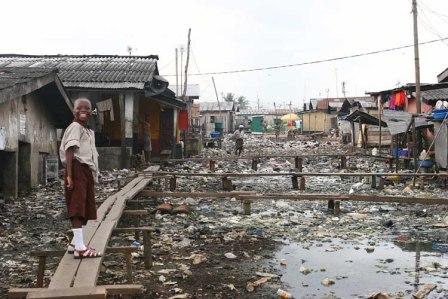A new report by United Nations Development Programme (UNDP), has shown Nigeria’s Human Development Index rising by two points and life expectancy also rising by eight years.
The News Agency of Nigeria (NAN) reports that the HDI report measured national achievements in Human Development Index in health, education and income/standard of living in 189 countries.
The report showed that Nigeria’s HDI value for 2017 was 0.532; it was 0.530 in 2016, and it has shown a consistent increase since the measurement began in 2003.
From that base year, when the HDI was estimated at 0.443, it has now increased to 0.532 in 2017, marking a 14.4 per cent over the period.
The country’s life expectancy at birth was also put at 53.9 years, while between 1990 and 2017, Nigeria’s life expectancy at birth has increased by eight years, the report showed.
But overall, Nigeria’s ranking was put at 157 among the 189 countries sampled, while the ranking was 156 in the previous year.
READ ALSO: Cement Price Drops By 25% in Enugu
The other good news in the report showed that years of schooling increased by one year and expected years of schooling increased by 3.3 years.
Nigeria’s Gross National Income (GNI) per capita increased by about 87.4 per cent between 1990 and 2017, the UNDP report showed.
The report put Nigeria’s population at 190.1 million in 2017, while the country’s projected population in 2030 is 264.1 million
Norway, which has topped the HDI chart every year since 2001 – with the exceptions of 2007 and 2008 – ranked 1 (0.953), followed by Switzerland, 2 (0.944), Australia, 3 (0.939), Ireland, 4 (0.939) and Germany, 5 (0.936).
However, the 20 countries with the lowest HDI – from 189 to 170 – are all African countries except Yemen, 178, while Niger, as it has for several years, ranked lowest at 189 (0.354).
With Nigeria, Central African Republic, 188 (0.367) South Sudan, 187 (0.388), Chad, 186 (0.404) and Burundi, 185 (0.417) have the lowest scores in the HDI’s measurement of national achievements in health, education and income.
A child born today in Norway could expect to live beyond 82 years, and spend almost 18 years in school, while a child born in Niger could expect only to live up to 60 years, and spend just five years in school.
The HDI criteria are designed to be broad enough to be inclusive of countries’ social, political and economic diversity, being indicative of a country’s quality of life.
Key regional development trends, as shown by the HDI and other human development indices, showed that Sub-Saharan Africa region recorded 35 per cent growth in HDI since 1990.
Five countries in Africa are now ranked in the “high human development” group namely; Seychelles, 0.797 (62), Mauritius, 0.790 (65) Botswana, 0.717 (101), Libya, 0.706 (108) and Gabon, 0.702 (110)
Twelve countries in the region are now in the “medium human development” group – South Africa, 113 (0.699), Egypt, 115 (0.696), Morocco, 123 (0.667), Cabo Verde, 125 (0.654), Namibia, 129 (0.647), Congo, 137 (0.606).
Others are Ghana, 140 (0.592), Equatorial Guinea, 141 (0.591), Kenya, 142 (0.590), Sao Tome and Principe, 143 (0.589), Kingdom of Eswatini, 144 (0.588), Zambia, 144 (0.588), Angola, 147 (0.581), and Cameroon, 151 (0.556).
In the “low human development” group, countries that ranked higher than Nigeria are: United Republic of Tanzania, 154 (0.538), and Zimbabwe, 156 (0.535), while Nigeria followed at 157 (0.532).
Rwanda ranked highest country in the world with most women in parliament. The country has held the top spot since 2008 with women holding more than half the seats in the parliament.
At 101 per 1,000 live births, Sub-Saharan Africa’s adolescent birth rate is more than twice the world average of 44 per 1,000 live births.
While Sub-Saharan Africa’s maternal mortality ratio is 549 deaths per 100,000 live births, some countries in the region such as Cabo Verde have achieved a much lower rate of 42 deaths per 100,000 live births. (NAN)




 Premier League
Premier League